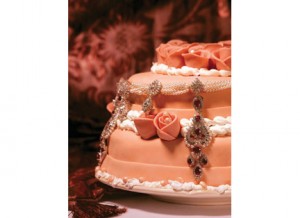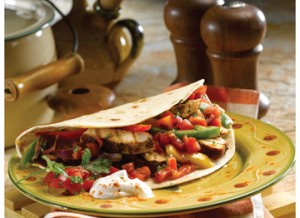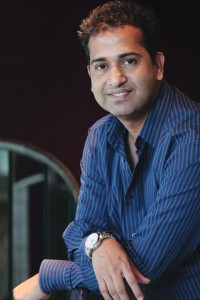Getting one to drool at a photograph of a pizza or plate of pav bhaji in a pamphlet or package is an art Aparna Sundaresan delves into the profession of food styling to discover the career that makes food look good
Picture a thick stream of cool, orange juice sloshing into a tall, clear glass, followed by three perfect ice cubes falling into the glass. It’s enticing. Now picture this: a thick stream of coloured, diluted corn syrup sloshing into a tall, clear glass, followed by three perfect acrylic cubes falling into the glass. It’s not even palatable, but this is the very orange juice you might see in an advertisement or on a juice box. And it is a food stylist who tricks you into thinking that what you are seeing is not junk but a refreshing glass of orange juice.
A food stylist is to food roughly like a makeup artist is to models. But unlike models, food rarely cooperates under the hot and tiresome strobe lights. For instance, ice-cream becomes a gooey mess within minutes under the lights. For many years, food stylists relied on tricks, like mashed potatoes with colouring instead of real ice-cream, to photograph food. Now stylists use real ice-cream, but the challenge of preserving it through a shoot is still there.
First Steps
While there is no formal degree in food styling, professionals come into this occupation via cognate fields – usually hotel management and home science. Love for food is an obvious prerequisite, as is an interest in cooking procedures and methods, and a certain degree of fearlessness in experimenting with them, so a background in culinary training is desirable. Several hotel management institutes are considering food styling as an alternative career option, but there are no courses in this field yet.
 Aiding Skills
Aiding Skills
What looks good to the eye will not necessarily always look good through a camera lens. “The ability to visualise, to have a keen sense of design and [knowledge of] photography,” sums up Mumbai-based chef and food stylist Michael Swamy while describing an ideal stylist. Adds Indranie Dasgupta, a Delhi-based stylist, “Must be fit, patient, ready with all things required, work as a team with the agency, client, photographer, know when to direct and when to take order, and be prepared to work as long as it takes to get the perfect shot.” A food stylist must be able to visualise food in a way that looks good for the camera. In many instances, food stylists themselves also take on the duties of a food photographer because they know best how to capture their vision and designs.
Job Prospects
Food styling is a lucrative career in India, considering how serious a business hospitality and catering are. Food stylists work on a freelance basis and are hired by restaurants, magazines, cookbook publishers and packaged food businesses.
 Remuneration
Remuneration
You might start off assisting another food stylist until you find your feet. Since assignments are on a freelance basis, clients might dictate the paycheque in your initial years and pay you a few thousand rupees. Says Dasgupta, “Some of my students are charging `5000 a day to begin with, and in New York stylists (established ones) charge $1000 per day.” As your experience increases, the pay rises too. When you become an independent and established stylist, you can fix your charges.
Challeges
“The biggest challenge is understanding exactly the clients requirement and being 100 per cent prepared for a shoot and being ready to work long hours with dedication and concentration,” Dasgupta says. Additionally, when working with clients, food stylists realise that they are dealing with people unaware of the many intricacies involved in styling. The challenge here, as Swamy puts it, is “handling ignorant clients, handling art directors who are kids who only think of copying designs rather than working [with] someone’s creativity.”
Food stylists spend a lot of time perfecting the look of a dish and handpick the components of the dish that will feature in the final shot. For example, to photograph of a bowl of rice, every grain of rice is handpicked with a pair of tweezers and arranged on the surface. Then there is also the issue of the destructive nature of bright studio lights. Food stylists are thus always equipped with extra food, mostly by the kilo, for photo shoots, and are always willing to redo dishes. If you relish being served a large helping of challenges with portions of creativity, aesthetics, and, of course, food, then food styling is a viable career choice for you.
“Glycerine is used a lot. A lot of the foods used in shoots are generally undercooked.”
– Michael Swamy
Glycerine is used for shots that need to exude freshness and cold, for example, glasses are coated with glycerine and then sprayed with water to simulate condensation.
Does styling food equate to loss of truth in advertising?
“In advertising everything is glamourised… or else why do they use Aishwarya [Rai] to model for face cream and not me? A photograph has to look good or else why show it at all?”
– Indranie Dasgupta
Volume 2 Issue 9





























